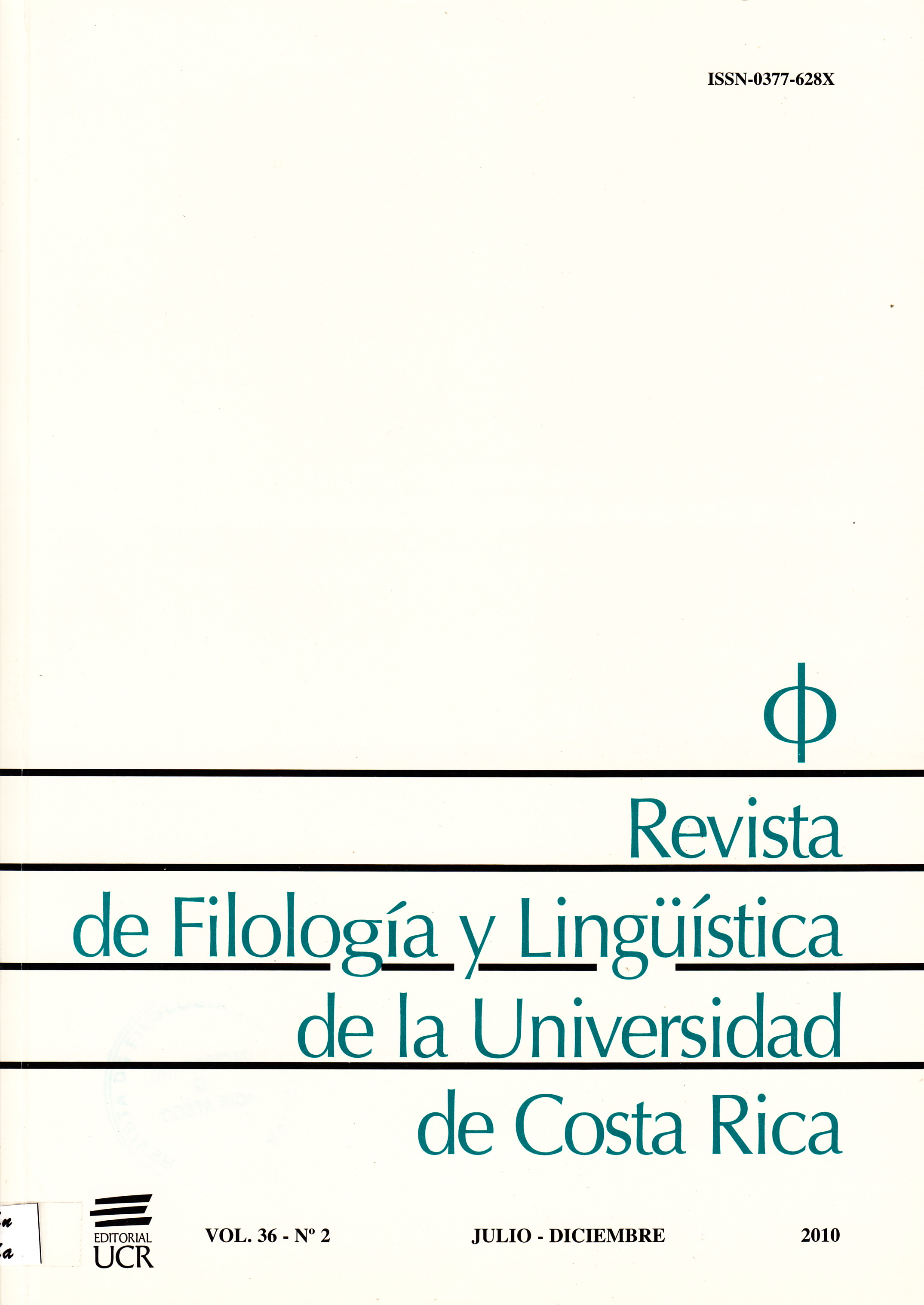Abstract
In this essay we discuss the sequelae experienced by the Cuban refuge in the United States. We analyze these consequences in terms of his cultural and linguistic identity, the psychological and existential effects as well as his way of dressing. Within this last section we examine the protagonist-narrator?s overcoat, since this garment becomes the leit-motif of the novel and without the vestiment Montes Huidobro?s text would not exist.References
Abellán, José Luis. 1987. “El exilio como categoría cultural. Implicaciones filosóficas”. Cuadernos Americanos. 1(1): 42-57.
Alvarez-Borland, Isabel. 1998. Cuban-American Literature in Exile: From Person to Persona. Charlottesville: U of Virginia P.
Barthes, Roland. 2006. The Language of Fashion. (Trad. Andy Stafford). Oxford: Berg.
Bousoño, Carlos. 1966. Teoría de la expresión poética. (4a ed). Madrid: Editorial Gredos.
Cabrera Infante, Guillermo. 1990. “The Invisible Exile”. Literature in Exile. (Ed. John Glad). Durham: Duke UP.
Chen Sham, Jorge. 2001. Radiografía del sujeto agónico: culpa y transcendencia en la novelística de Rima de Vallbona. San José: Perro Azul.
Eco, Umberto. 1981. Lectura in fabula. Barcelona: Lumen.
Edwards, Robert. 1988. “Exile, Self, and Society”. Exile in Literature. (Ed. María Inés Lagos-Pope). Lewisburg: Bucknell UP. 15-31
Gass, William. 1990. “The Philosophical Significance of Exile”. Literature in Exile. 1-8.
Gil, Lourdes. 1998. “Against the Grain: Writing in Spanish in the USA”. Remembering Cuba: Legacy of a Diaspora. (Ed. Andrea O’Reilly Herrera). Austin: U of Texas P.
González Montes, Yara. 2007. “La ensayística en la obra literaria de Matías Montes Huidobro”. Matías Montes Huidobro: su obsesión por la escritura. Ed. Yara González. Miami: Ediciones Universal.
Ilie, Paul. 1981. Literatura y exilio interior: escritores y sociedad en la España franquista. Madrid: Fundamentos.
Knapp, Bettinna. 1991. Exile and the Writer. Esoteric and Esoteric Experiences. A Jungian Approach. Philadelphia: The Pennsylvania UP.
Lurie, Alison. 1992. “Clothing as a Sign System”. The Language of Clothes. London: Bloomsbury.
Montes Huidobro, Matías. 2010. Cuba detrás del telón. Insularidad y exilio (1969-1979) .Miami: Ediciones Universal.
(1975). Desterrados al fuego. México: Fondo de Cultura Económica.
(1991). “Monad, Quantum and Entropy in Cela’s Chaos”. (Trad. Luis A. Jiménez). Ometeca. 2 (2): 55-70.
Montague, Ken. 1994. “The Aesthetics of Hygiene: Aesthetic Dress, Modernity and the Body as Sign”. Journal of Design History 7(2): 91-112.
Ricoeur, Paul. 1985. Memory, History, Forgetting. Trad. K Blomey y D. Pellaver. Chicago: Chicago UP.
Said, Edward. 1990. “Reflections on Exile”. Out There: Marginalization and Contemporary Cultures. (Ed. Russell Ferguson et al). Cambridge: The M.I.T. P.
Saussure, Ferdinand de. 1955. Curso de lingüística general. Trad. Amado Alonso. Buenos Aires: Editorial Losada.
Siemens, William. 2007. “Transformaciones paralelas en Desterrados al fuego”. En: González (ed), 17-25.
Ugarte, Michael. 1989. Shifting Ground: Spanish Civil War Exile Literature. Durham: Duke UP.
Unamuno, Miguel de. 1999. Del sentimiento trágico de la vida. (3a. ed). Madrid: Editorial Espasa-Calpe.
Zavala, Iris, M. 1991. Unamuno y el pensamiento dialógico. Barcelona: Editorial Anthropos.

